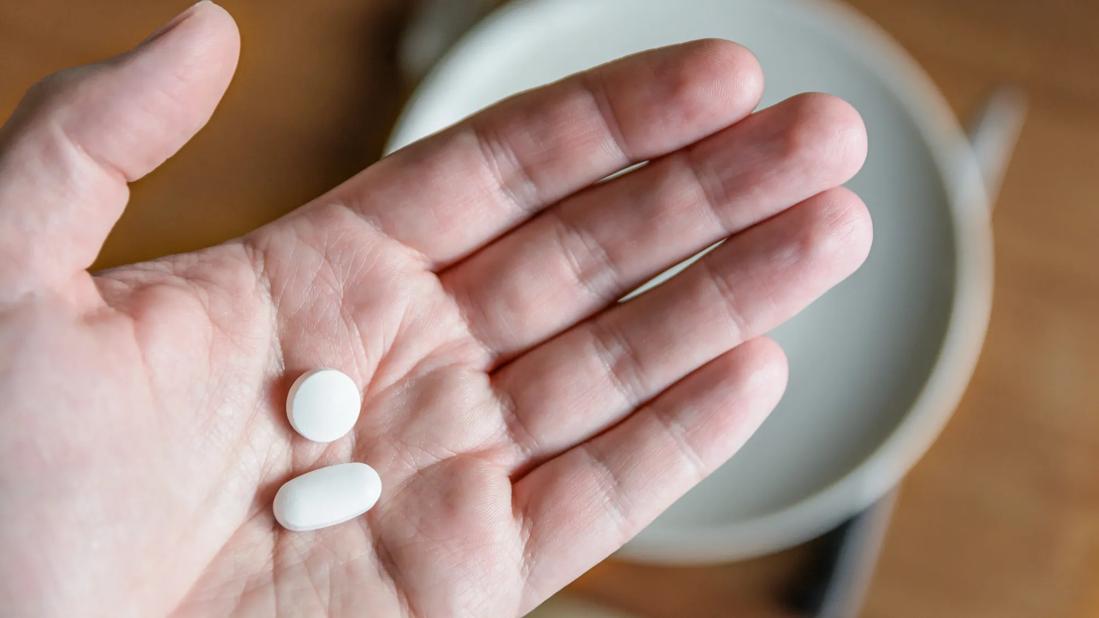Though these painkillers work in different ways, they can both help reduce a fever and pain

Over-the-counter (OTC) painkillers have earned their spot in your medicine cabinet. You reach for them to lower a fever, banish a headache or ease those monthly cramps.
Advertisement
Cleveland Clinic is a non-profit academic medical center. Advertising on our site helps support our mission. We do not endorse non-Cleveland Clinic products or services. Policy
Both acetaminophen (such as Tylenol®) and ibuprofen (like Advil® or Motrin®) are used to treat fevers and pain. But they’re not exactly interchangeable.
So, when it comes to ibuprofen vs. acetaminophen, which should you choose?
Family medicine specialist Matthew Goldman, MD, discusses what you should know about ibuprofen vs. acetaminophen, and which one makes the most sense for your aches and pains.
So, how does ibuprofen work? Ibuprofen is a nonsteroidal anti-inflammatory drug (NSAID). Ibuprofen blocks the production of prostaglandins, the chemicals that cause inflammation.
And as the name suggests, it tends to be most helpful for discomfort that goes hand-in-hand with inflammation, which can include redness, swelling, heat, pain and/or loss of function at the site or source.
Common side effects of ibuprofen include:
Taking ibuprofen for a long time or at high doses can also increase the risk of more serious side effects, such as:
Ibuprofen is metabolized by your kidneys and, therefore, isn’t a great option for those with kidney issues.
Acetaminophen is a type of drug called an analgesic. Translation: It reduces pain signals within the nervous system and not at the site itself.
Advertisement
Side effects of acetaminophen (which may be called paracetamol in countries outside the U.S.) are minimal, but some people experience problems, including:
Acetaminophen is metabolized by your liver and isn’t a great option for those with liver issues.
Dr. Goldman says there isn’t necessarily one right answer for everyone. Factors such as your underlying cause and medical history (like kidney or liver issues) may determine if one option is safer than the other. It’s best to check with a healthcare provider on which option to use.
But in general, here are some examples of when you may want to use each.
As an anti-inflammatory drug, ibuprofen may be a smart pick for pain such as:
Acetaminophen, which reduces pain signals, may be a good choice for pain like:
Additionally, most research suggests acetaminophen and ibuprofen have similar results in controlling fevers in adults, so pick what works for you. But ibuprofen tends to work better as a fever reducer in children. Be sure to follow the dosage guidelines on the label for your little one’s age and weight.
How often can you take Advil and other types of ibuprofen? What about acetaminophen?
The recommended max dosage for adults is:
Acetaminophen can also be hidden in several over-the-counter medicines, including cough and cold medications. If you’re taking more than one medication, read drug labels carefully so you don’t go over the recommended dosage. For example, it may not be safe to take cold medicine and Tylenol at the same time.
But can you take ibuprofen and acetaminophen together?
“For those who have neither kidney nor liver issues, sometimes, we alternate acetaminophen and ibuprofen to avoid overdosing as well as attacking pain and inflammation from two different approaches,” says Dr. Goldman.
Another important note? Both ibuprofen and acetaminophen can interact negatively with some prescription and over-the-counter drugs. If you’re taking medication, talk to your provider doctor or pharmacist before reaching for the painkillers.
It can be confusing to know which pain medication to use for your aches and pains. But educating yourself on how ibuprofen and acetaminophen each work can help you make an informed decision.
Advertisement
When used responsibly, ibuprofen and acetaminophen are safe choices for turning down the dial on fever and pain. And isn’t it good to have options?
Advertisement
Learn more about our editorial process.
Advertisement

This diabetes medication can treat obesity, but it’s not for people who just want to drop a few pounds

Your body’s response to rapid weight loss from the medication may cause shedding

This medication is best used on a limited basis

Authorized take-back programs, services and drop-off locations are the best, safest way to get rid of expired medicine

These illegal supplements have negative impacts for vital organs and may cause psychosis, heart attacks and more

These creams that you apply to your skin can actually help reduce localized pain, swelling and inflammation

Rapid weight loss can change the way your face looks, bringing wrinkles, sagging skin and a gaunt appearance

‘Black box warnings’ on medications outline potential risks and important instructions

Start having sex about 72 hours before ovulation, then at least every other day during your fertile window

Attachment theory suggests that your earliest relationships shape connections throughout your life

It isn’t a recognized mental health disorder, but research shows that problematic social media use can negatively affect your mental health, self-esteem and sleep